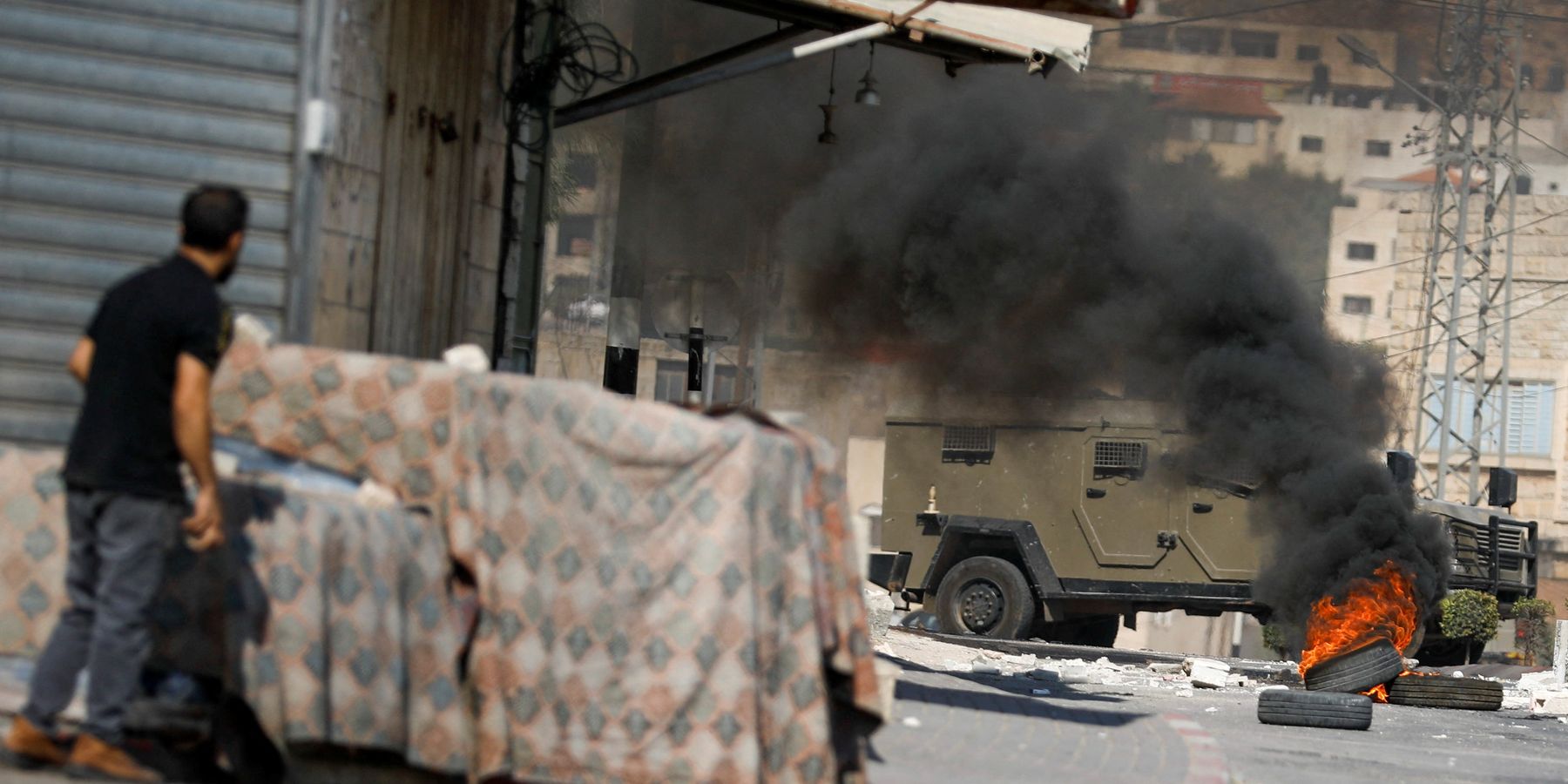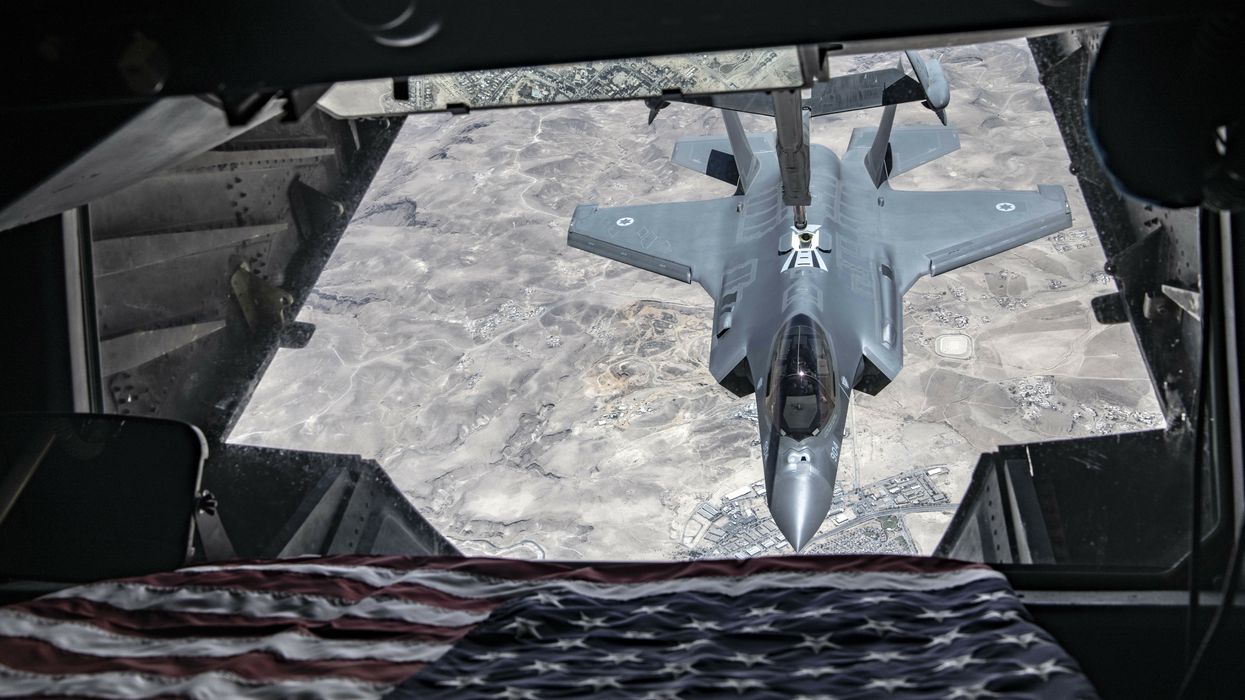With the world’s eyes understandably focused on the carnage in the Gaza Strip, violent manifestations of the Israel-Palestinian conflict in the Israeli-occupied West Bank have been getting even less attention than they normally get, and less than they deserve. Amid concerns about possible spreading of the current war in Gaza, spreading already has begun in the West Bank, with the potential there of stimulating still more spread.
Casualties have spiked in the West Bank since the Hamas attack on October 7. More than 100 Palestinians, including civilians, have been killed there.
Most of the casualties have been incurred as part of accelerated operations in the West Bank by the Israeli Defense Forces (IDF), in the form of raids, mass arrests, and crackdowns on protests. The stepped-up Israeli use of force has even included an airstrike on a mosque in a refugee camp in the city of Jenin — a rarity in the West Bank, where the Israelis usually rely on ground forces.
Additional violence has come at the hands of Israeli settlers — some of the 670,000 Israelis whose residence in the occupied West Bank and East Jerusalem is widely recognized as a violation of international law. The United Nations Office for the Coordination of Humanitarian Affairs recorded in just the first two weeks of the current crisis 100 attacks by Israeli settlers against Palestinian residents. The U.N. office noted that this represented an average of almost eight such incidents per day, up from a daily average of three incidents since the beginning of this year.
The connection between this settler violence and the events this month in southern Israel and the Gaza Strip has two aspects. One is that Israeli anger over the Hamas attack and the blurring of such emotion into a general hatred of Palestinian Arabs has made the current moment even more of an open season on Palestinians than it was before. The second is that the current focus of attention on Gaza among the press, foreign governments, and the world generally has represented an opportunity for settlers to conduct violent and illegal business in the West Bank while drawing little notice. Mairav Zonszein, an Israel-based analyst with the International Crisis Group, notes that a difference between now and before is that the settler violence is occurring “without almost any media attention being paid to it.”
These developments are a continuation, in intensified form, of longer trends in the physical suffering of West Bank Palestinians. Many of the nearly 1,600 deaths of Palestinians at the hands of Israelis between 2015 (that is, since the last big Israeli attack on Gaza in 2014) and August of this year were in the West Bank. The violence accelerated in 2023, even before October 7. This year was already on pace to be the deadliest year for residents of the West Bank since the United Nations began keeping such records in 2005.
The upsurge in Israeli violence in the West Bank clearly is related to the coming to power at the beginning of this year of an extreme right-wing Israeli government. Far from policing or discouraging the settler violence, the de facto Israeli response often has been to permit or condone it, with IDF soldiers standing aside or even participating in some of the violence. One of the most prominent of the extremists currently in power, minister of national security Itamar Ben-Gvir — himself a West Bank settler — promised to distribute as many as 10,000 free rifles to Israeli citizens, including West Bank settlers.
All this is part of a longer-term process of one people, defined in ethnic and religious terms, subjugating another people similarly defined, and of the determination of successive Israeli governments to maintain Jewish Israeli supremacy over all the land between the Mediterranean Sea and the Jordan River. Part of the formula for doing this has been to cordon off some two million of the Arab residents into the Gaza Strip and to rely on blockades, periodic “mowing the grass ” with military force, and an occasional misery-alleviating sop to keep those Arabs from interfering with Israeli ambitions. The Hamas attack, of course, shattered some of the assumptions underlying that strategy.
The other part of the formula has been the piecemeal displacement of West Bank Palestinians from their land. Although much of the settler violence manifests simple hatred and bigotry, much of it is a more calculated effort to make life for Palestinian neighbors so miserable — or so uneconomic, given settler tactics such as vandalism of olive groves or denial of water and pastures needed by herded livestock — that those neighbors will give up and move. The accelerated anti-Palestinian settler activity this month has included much of this kind of intimidation. The Israeli human rights watchdog organization B’Tselem reported earlier this month that in the previous week, eight entire West Bank communities, numbering 472 people, had abandoned their homes out of fear for their lives and livelihoods.
The current war, replete with Israeli orders for millions of Gaza residents to evacuate what the Israeli military has turned into a free-fire zone, has raised fears throughout the region of a new Nakba or catastrophe — another installment of the war in the 1940s that caused the mass displacement of longtime Palestinian residents from what became the state of Israel. The fears gained credibility from the leak of an Israeli government planning document that calls for forcibly transferring the population of the Gaza Strip to the Sinai. Perhaps the only thing preventing Israel from trying to implement such a plan is that the Egyptian government has multiple reasons to refuse to participate in any such scheme.
That scheme was about Gaza, but West Bankers probably have the most to fear from any new mass displacements or ethnic cleansing. Gaza is the open-air prison, but the West Bank, with East Jerusalem, is the prize — the land that Israeli hardliners want for, and only for, their own people.
The other dynamic that has made the West Bank increasingly become a powder keg since October 7 is the unsurprising increase in anger and resentment among the Palestinians who live there. Fear of a new Nakba is part of it. The casualties from increased settler violence and IDF use of military force are part of it. And so are the miseries in everyday life that have come from roadblocks and other obstructions to movement that the IDF has increased this month.
Another big part of it is anger over the death and devastation that the Israeli assault on the Gaza Strip has imposed on the Palestinian brethren who live there. This is not a matter of support for Hamas. It is a matter of feeling the pain of co-nationals and of general outrage over the infliction of mass suffering.
The chance of a new intifada, or popular uprising, in the West Bank, was already significant before this month and is now even higher. In the current atmosphere, a new intifada would likely be at least as violent as the last one. It would by itself represent a significant spread of the war in Gaza. And by making the entire Israeli-Palestinian conflict that much larger, it would increase the chance of further spread, such as by drawing in Lebanese Hezbollah.
- Danger for US deepens as Gaza crisis escalates ›
- The end of the Netanyahu doctrine ›
- US rifles may go to Israeli settlers, police units accused of rights violations - Responsible Statecraft ›
- Evidence of ethnic cleansing growing in West Bank and Gaza - Responsible Statecraft ›
- What war crimes warrants would mean for Netanyahu, Hamas leaders | Responsible Statecraft ›
- Why Israel is attacking the West Bank | Responsible Statecraft ›
- Gaza in the rearview, Israelis turn tanks and guns onto West Bank | Responsible Statecraft ›
















